Related Research Articles
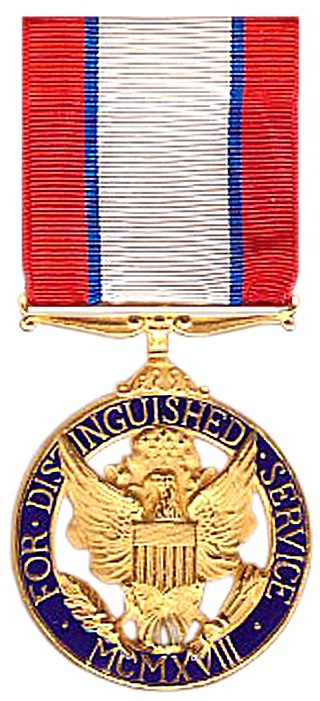
The Distinguished Service Medal (DSM) is a military decoration of the United States Army that is presented to soldiers who have distinguished themselves by exceptionally meritorious service to the government in a duty of great responsibility. The performance must be such as to merit recognition for service that is clearly exceptional. The exceptional performance of normal duty will not alone justify an award of this decoration.

Nikolay Gerasimovich Kuznetsov was a Soviet naval officer who achieved the rank of Admiral of the Fleet of the Soviet Union and served as People's Commissar of the Navy during the Winter War and the Second World War. The N. G. Kuznetsov Naval Academy and the Russian aircraft carrier Admiral Kuznetsov, as well as the Kuznetsov-class carrier class, are named in his honor.
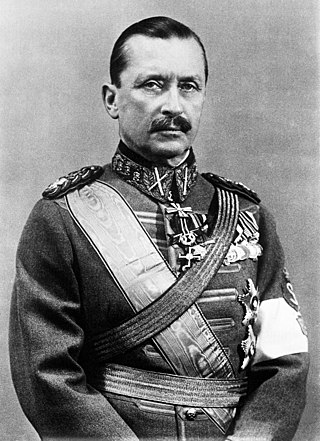
Baron Carl Gustaf Emil Mannerheim was a Finnish military commander, aristocrat, and statesman. He served as the military leader of the Whites in the Finnish Civil War (1918), as Regent of Finland (1918–1919), as commander-in-chief of the Finnish Defence Forces during the period of World War II (1939–1945), and as the sixth president of Finland (1944–1946). He became Finland's only field marshal in 1933 and was appointed honorary Marshal of Finland in 1942.
Generalfeldmarschall was a rank in the armies of several German states and the Holy Roman Empire (Reichsgeneralfeldmarschall); in the Habsburg monarchy, the Austrian Empire and Austria-Hungary, the rank Feldmarschall was used. The rank was the equivalent to Großadmiral in the Kaiserliche Marine and Kriegsmarine, a five-star rank, comparable to OF-10 in today's NATO naval forces.

Job Wilhelm Georg Erdmann Erwin von Witzleben was a German Generalfeldmarschall in the Wehrmacht during the Second World War. A leading conspirator in the 20 July plot to assassinate Adolf Hitler, he was designated to become Commander-in-Chief of the Wehrmacht in a post-Nazi regime had the plot succeeded.
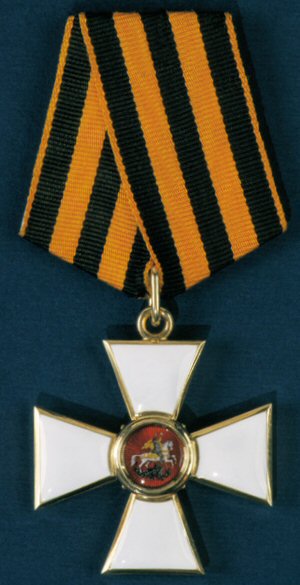
The Order of Saint George is the highest military decoration of the Russian Federation. It was originally established on 26 November 1769 Julian as the highest military decoration of the Russian Empire for commissioned officers and generals by Empress Catherine the Great. After the October Revolution in 1917, it was awarded by the White movement under Alexander Kolchak until their collapse in 1921. The order was revived in the Russian Federation on 20 March 1992 by Decree No.1463 of the President of Russia. The current award criteria were amended on 7 September 2010 by Presidential Decree 1099.
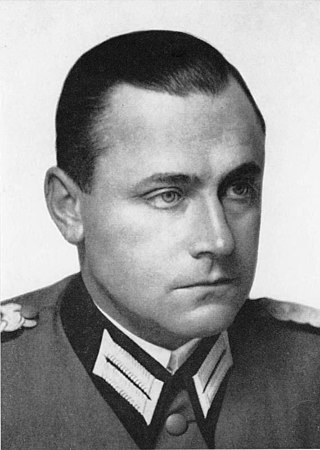
Walter Warlimont was a German staff officer during World War II. He served as deputy chief of the Operations Staff, one of departments in the Oberkommando der Wehrmacht (OKW), the Armed Forces High Command. Following the war, Warlimont was convicted in the High Command Trial and sentenced to life imprisonment as a war criminal. He was released in 1954.
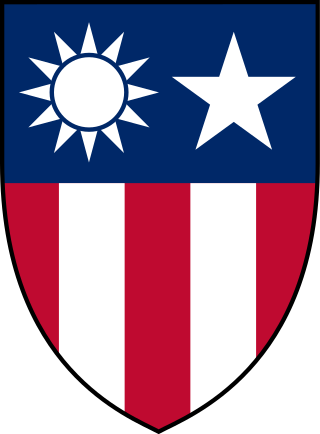
China Burma India Theater (CBI) was the United States military designation during World War II for the China and Southeast Asian or India–Burma (IBT) theaters. Operational command of Allied forces in the CBI was officially the responsibility of the Supreme Commanders for South East Asia or China. In practice, U.S. forces were usually overseen by General Joseph Stilwell, the Deputy Allied Commander in China; the term "CBI" was significant in logistical, material and personnel matters; it was and is commonly used within the US for these theaters.

The Battle of Makin was an engagement of the Pacific campaign of World War II, fought from 20 to 24 November 1943 on Makin Atoll in the Gilbert Islands.

The Race to Berlin was a competition between Soviet Marshals Georgy Zhukov and Ivan Konev to be the first to enter Berlin during the final months of World War II in Europe.
Hans-Georg von Friedeburg was a German admiral, the deputy commander of the U-boat Forces of Nazi Germany and the second-to-last Commander-in-Chief of the Kriegsmarine. He was the only representative of the armed forces to be present at the signing of the German instruments of surrender in Luneburg Heath on 4 May 1945, in Reims on 7 May and in Berlin on 8 May 1945. Von Friedeburg committed suicide shortly afterwards, upon the dissolution of the Flensburg Government.
Mustang is a military slang term used in the United States Armed Forces to refer to a commissioned officer who began their career as an enlisted service member. A mustang officer is not a temporary or brevet promotion but is a commissioned officer who receives more pay according to their rank of O1-E, O2-E, etc., but has no more command responsibilities than those of any commissioned officer of the same grade.
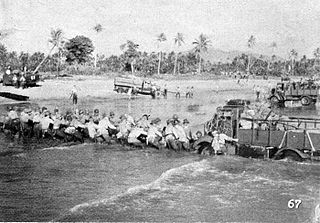
The Dutch East Indies campaign of 1941–1942 was the conquest of the Dutch East Indies by forces of the Empire of Japan in the early days of the Pacific campaign of World War II. Allied forces attempted unsuccessfully to defend the islands. The East Indies were targeted by the Japanese for their rich oil resources which would become a vital asset during the war. The campaign and subsequent three-and-a-half-year Japanese occupation was also a major factor in the end of Dutch colonial rule in the region.

The Allied leaders of World War II listed below comprise the important political and military figures who fought for or supported the Allies during World War II. Engaged in total war, they had to adapt to new types of modern warfare, on the military, psychological and economic fronts.

The Axis leaders of World War II were important political and military figures during World War II. The Axis was established with the signing of the Tripartite Pact in 1940 and pursued a strongly militarist and nationalist ideology; with a policy of anti-communism. During the early phase of the war, puppet governments were established in their occupied nations. When the war ended, many of them faced trial for war crimes. The chief leaders were Adolf Hitler of Nazi Germany, Benito Mussolini of Fascist Italy, and Hirohito of Imperial Japan. Unlike what happened with the Allies, there was never a joint meeting of the main Axis heads of government, although Mussolini and Hitler met on a regular basis.
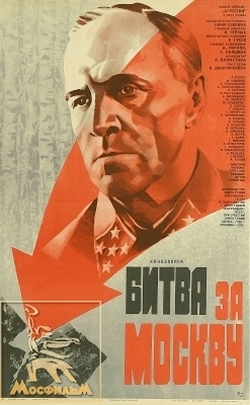
The Battle of Moscow is a 1985 Soviet two-part war film, presenting a dramatized account of the 1941 Battle of Moscow and the events preceding it. The films were a Soviet-East German-Czechoslovak-Vietnamese co-production directed by Yuri Ozerov who also wrote the script. It was made in time for the 40th anniversary of the Allied victory over Nazi Germany and the 20th anniversary of the proclamation of the Victory Day holiday and Moscow's declaration as a Hero City.
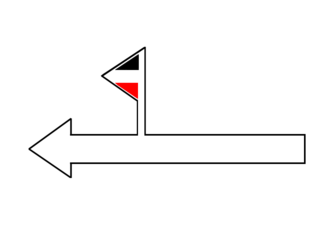
The 297th Infantry Division was an Infantry Division within the German Army, active during the Second World War. It was one of the components of the 6th Army during its failed attack on Stalingrad.
In many nations, the highest military ranks are classed as being equivalent to, or are officially described as, five-star ranks. However, a number of nations have used or proposed ranks such as generalissimo, which are senior to their five-star equivalent ranks.
References
- ↑ "AHC TV Schedule - Watch Now for FREE!". military.discovery.com. Retrieved 2 November 2017.